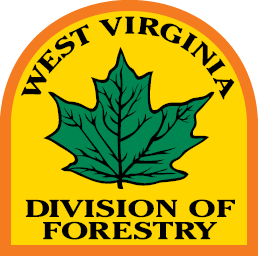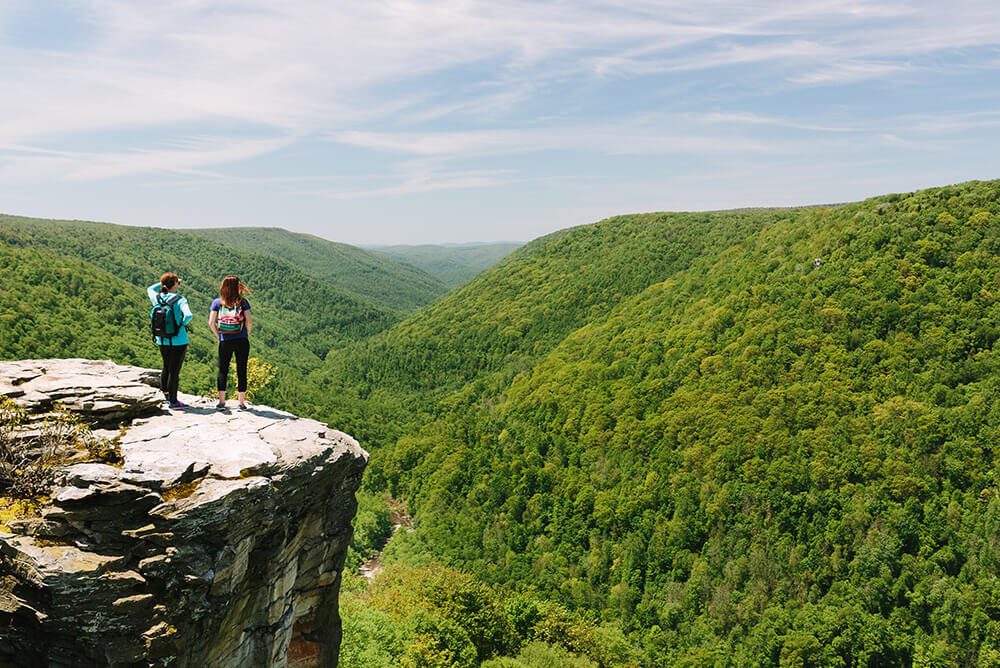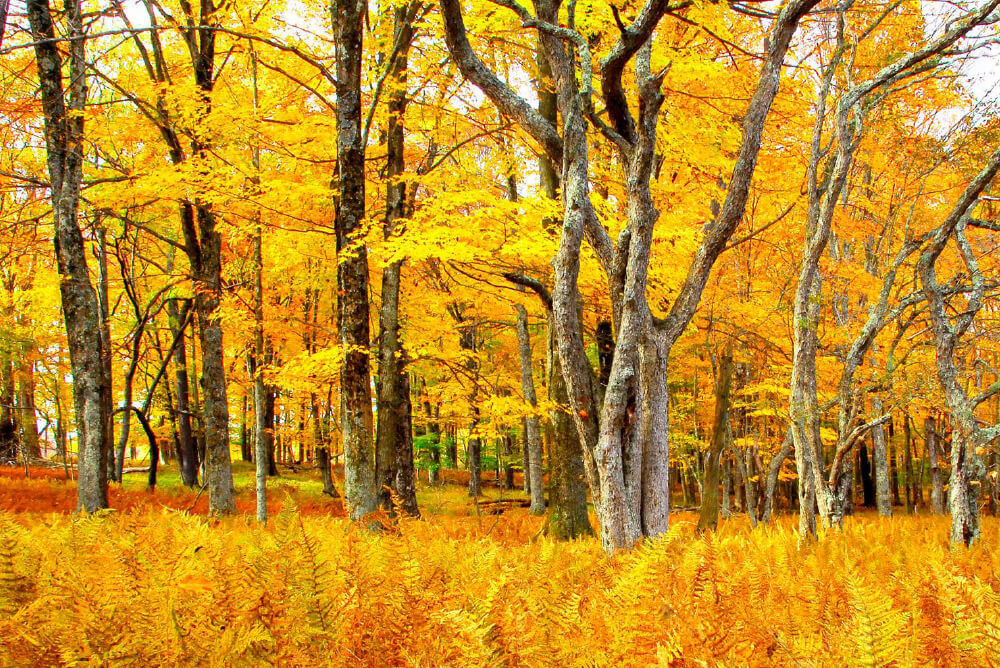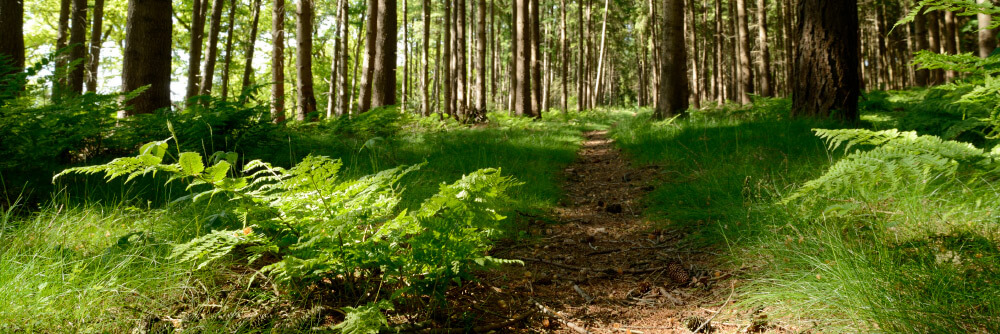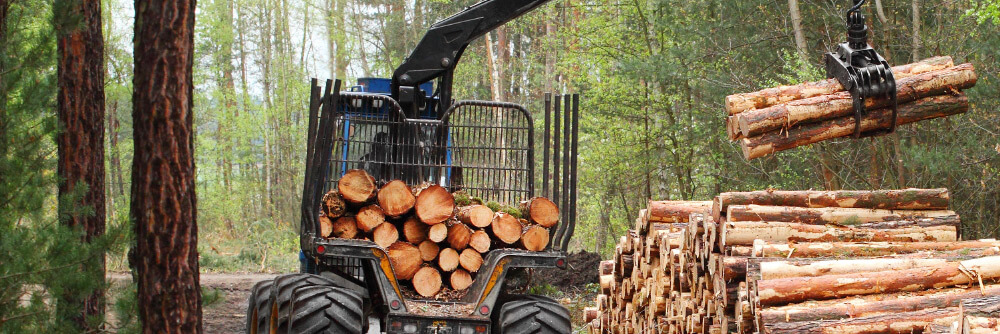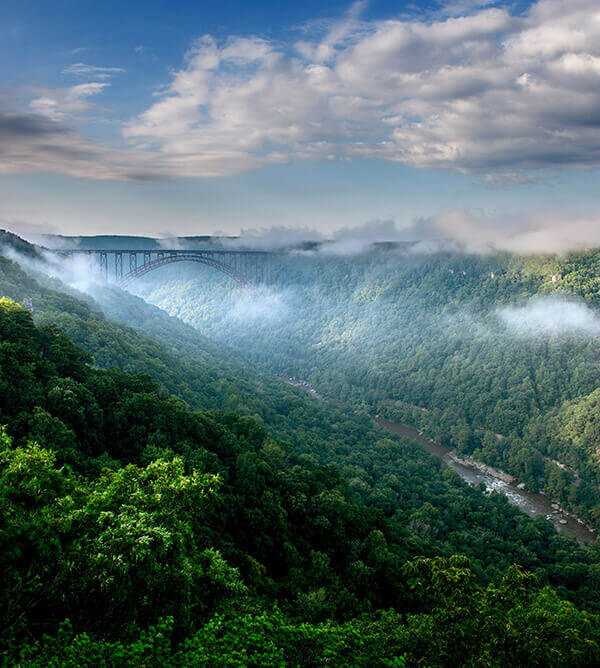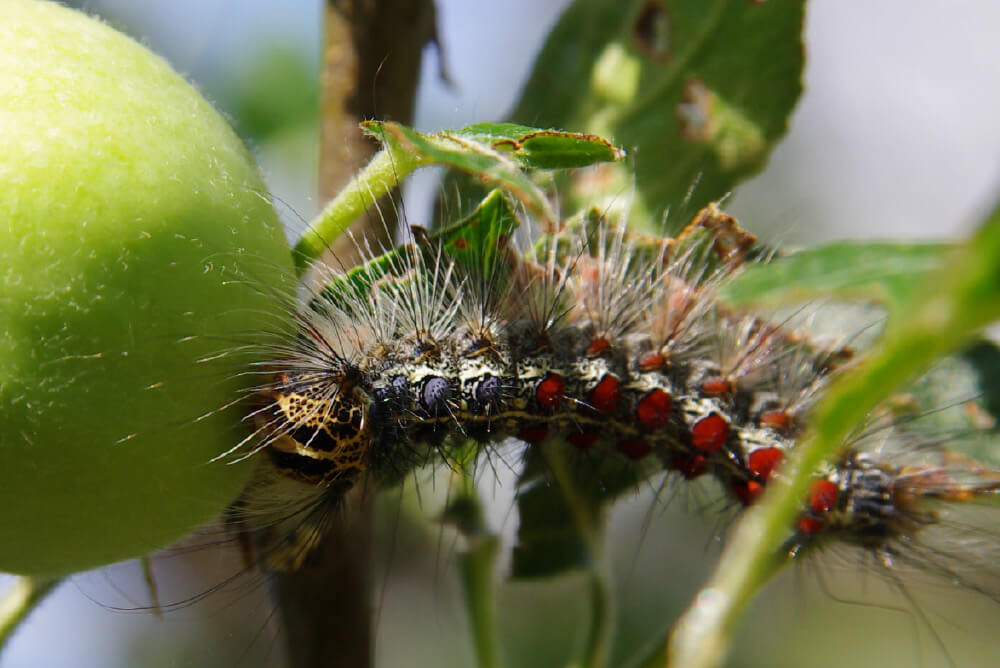History of the West Virginia Division of Forestry
he original forests of West Virginia covered 15,400,000 acres and were dense and rich with old timber. Explorers to our region spread the word of the plentiful trees that graced the land. Settlers came but found they had too many trees for their needs. They cleared the land of what they could and used the hardwoods most beneficial to them.
Lumber companies set up in the state, attracted to the large amounts of the white pine forests, which were in high demand at the time. The first large mill established was the St. Lawrence Boom and Lumber Company in Ronceverte, Greenbrier County in the 1880’s. By 1900, it’s estimated there were hundreds of large mills in West Virginia, harvesting red spruce, hemlock, and other valuable hardwoods. Timbering operations peaked around 1910 and by its relative decline in the mid 1920’s, forests were eventually timbered out.
As a result, large amounts of slash were left behind from operations that weren’t managed well. This created fodder for wildfires that burned thousands acres. Trees left behind died of exposure and soil erosion caused major floods.
The need for regulation was evident. The Board of Fish Commissioners was created in 1877 and was later replaced by the 1897 Fish and Game Warden Office. Forest management was integrated next and the Office of Forest, Game, and Fish Warden was established in 1909, as a declaration of the state government for the need of forest protection and research.
A.B. Brooks, who later became West Virginia’s first forester, was asked by legislature in 1909 to lead an extensive study and prepare a report on the state forests and wood using industries. In 1911, The West Virginia Geological Survey published his Forestry and Wood Industries of West Virginia.
In 1933, the Conservation Commission was created by the state legislature. It created the position of state forester. They partnered with the U.S. Civilian Conservation Corps and developed wild land for recreation, fought wild fires, planted trees, and managed camps.
The federal government’s Cooperative Forest Management Act of 1950 allowed for cooperation between the U.S. Forest Service and state forestry agencies to assist private landowners with nonindustrial forestland. This has since grown into multiple programs such as urban forestry, forest management, forest safety, forest utilization, and forest protection.
The Conservation Commission was reorganized in 1961 as the Department of Natural Resources, with the Division of Forestry within it. Forestry moved to the Department of Agriculture in 1985 and in 1990, it became an independent agency under the Department of Commerce.
Today, West Virginia is the country’s third most forested state.
Heads of West Virginia’s Division of Forestry, 1909-Present
Chief Forest Wardens
1909-1919 Â Jules A. Viquesney
1919-1919 Â C.W. Brandon
1920-1921Â Clare W. Harding
Chief Forest Fire Warden
1921-1929 Â P.M. Browning
Chief Foresters
1929-1931 Â H.S. Newins
1931-1933Â J.W.K Holliday
State Foresters
1933-1934 Â Hubbard W. Shawhan
1934-1941Â Dan. B. Griffin
1941-1943 Â R.O. Bowen
1943-1945 Â D.B. (Pete) Bonebrake (Acting)
1945-1946 Â R.O. Bowen
1946-1950 Â Wilson B. Sayers
1950-1956 Â Hays E. Helmick
1956-1976 Â Lester McClung
1976-1980 Â Asher W. Kelly, Jr.
1980-1986 Â Byron J. Warder
*1986-1992 Â William H. Gillespie, Director
1986-1992Â Ralph P. Glover, Jr., (Acting)
1993 Â Edward Murriner (Acting)
1993-1998Â William R. Maxey
1999-2017Â Charles Dye
2017-2020 Barry Cook
2020-2022 Tom Cover
2022-2023 Anthony Evans (Acting)
2023-Present Jeremy Jones
*During the period 7/1/85-6/30/92, both the position of State Forester and Director were in existence. In 1993, these positions were combined, i.e. Director/State Forester.
Learn more about the fascinating history of the West Virginia Division of Forestry.

